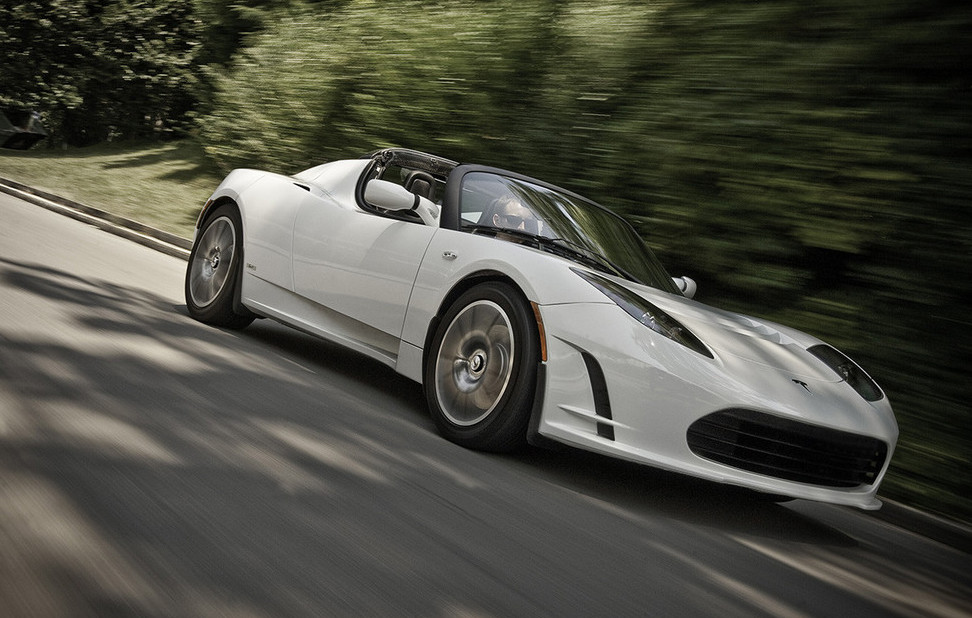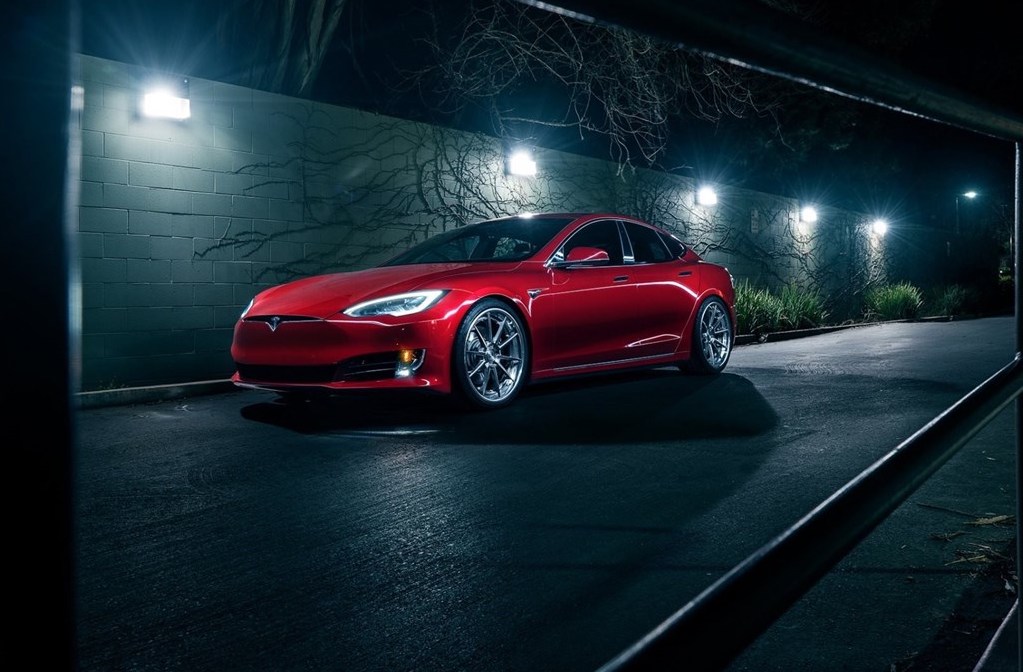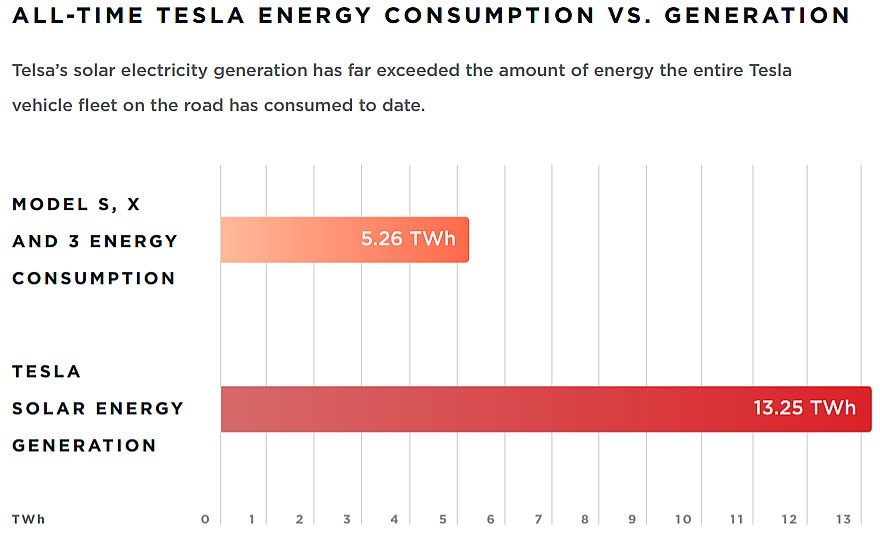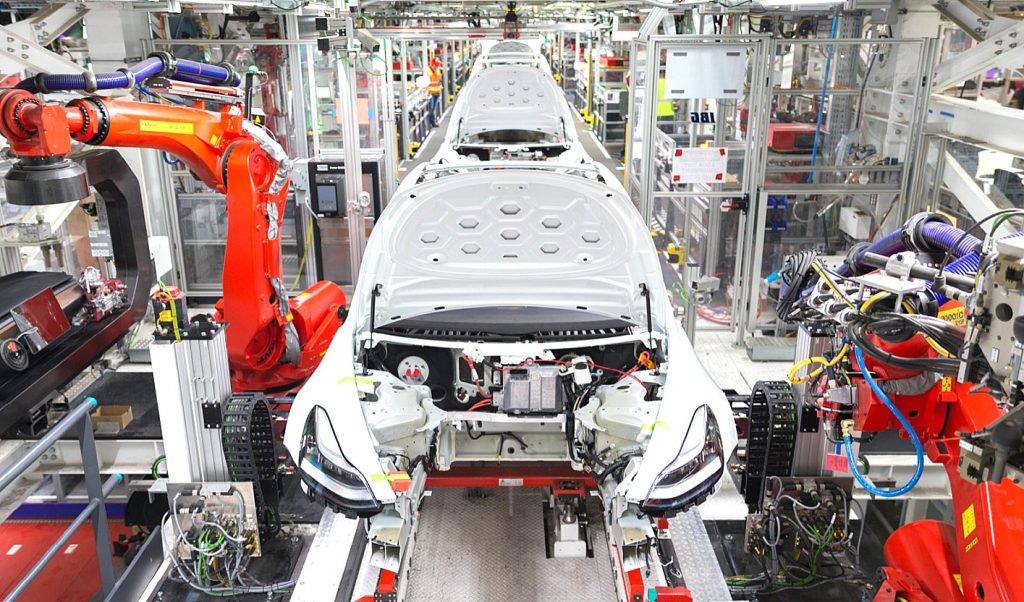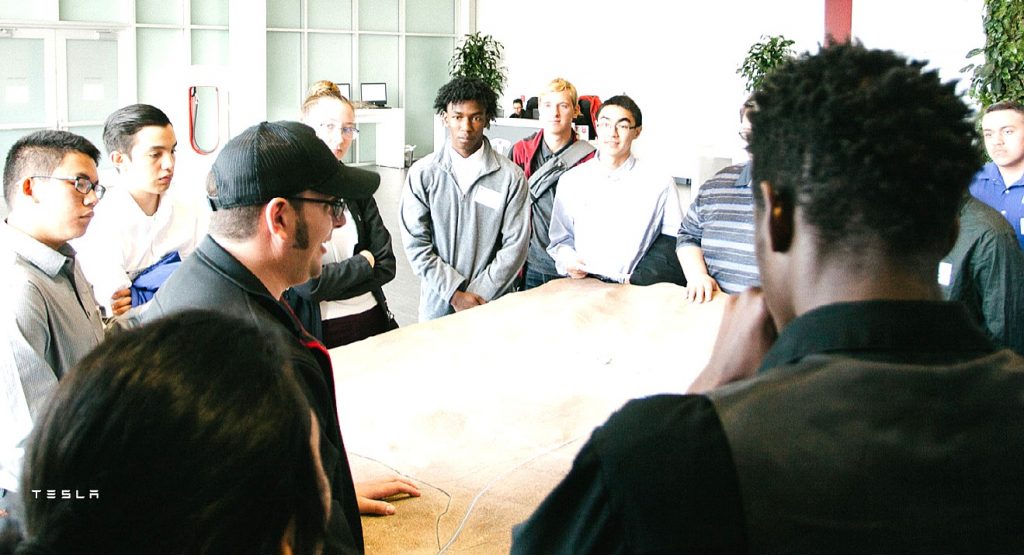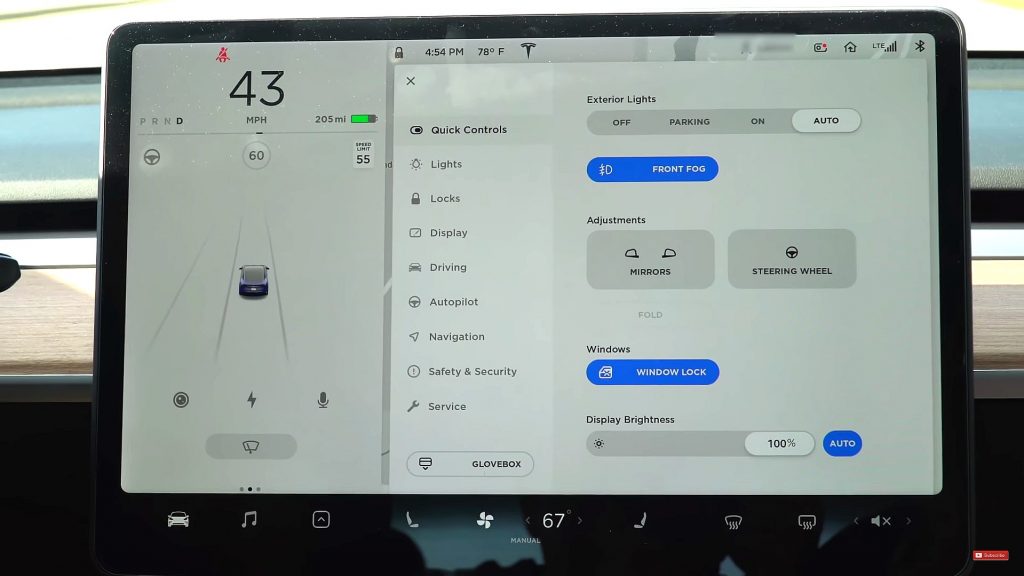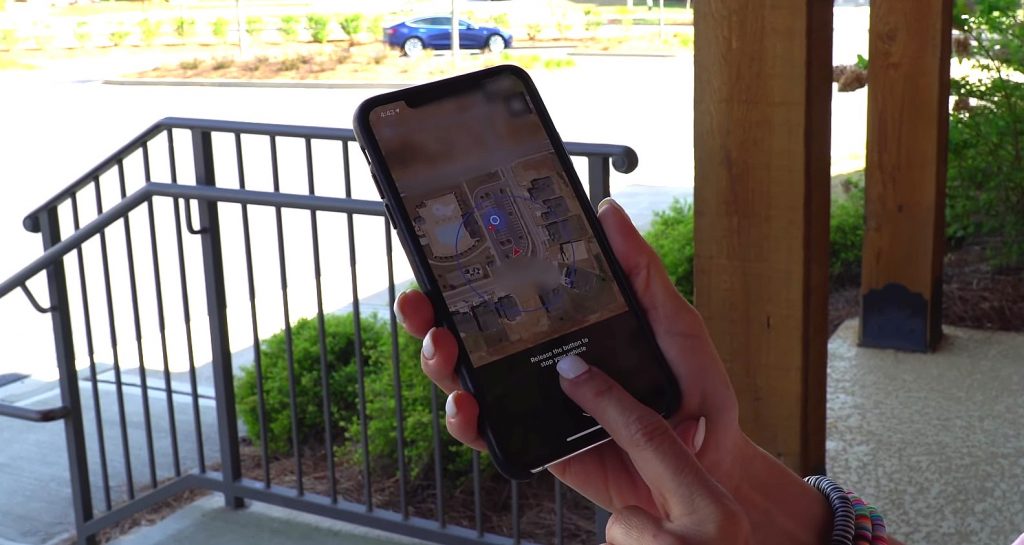SpaceX’s first Falcon Heavy Block 5 center core (i.e. booster) has completed a bittersweet return to shore aboard drone ship Of Course I Still Love You after apparently breaking in half during a wave-induced tumble.
Local maritime and spaceflight fans Julia Bergeron and Stephen Marr were first to document the condition of the SpaceX rocket as it passed through the mouth of Port Canaveral. Although the lighting conditions were far from optimal, photos indicate that the Block 5 center core suffered a near-surgical removal of everything above its kerosene (RP-1) propellant tank. In other words, the liquid oxygen (LOx) tank and interstage are nowhere to be found, while Falcon Heavy B1055’s octaweb, nine Merlin 1D engines, landing legs, and maimed RP-1 tank are all safely resting on OCISLY’s deck.
The port arrival of B1055’s severed aft section is not exactly the happiest ending to the story of Falcon Heavy Flight 2 but the booster’s demise will reportedly have no impact on SpaceX’s 2019 launch manifest. That includes Flight 3 of Falcon Heavy, scheduled to launch with both of Falcon Heavy’s flight-proven side boosters as early as late June. Thankfully, SpaceX has built a second brand new Falcon Heavy center core for the critical US Air Force mission, known as STP-2.
Likely to be booster B1057, that fresh center core should have no difficulty supporting Falcon Heavy’s third launch, although SpaceX will probably ensure that the drone ship’s robotic recovery robot is Falcon Heavy-compatible this time around.
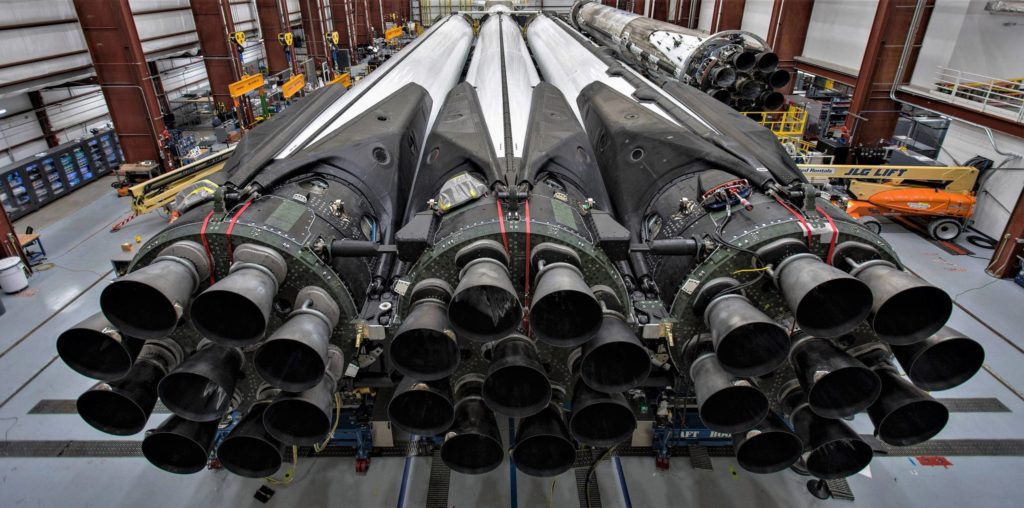
According to SpaceX CEO Elon Musk, the cause of this incident is easily traced back to a combination of bad luck and the simple fact that OCISLY’s Octagrabber had yet to be outfitted for Falcon Heavy center cores. It’s unclear what prevents Octagrabber from interfacing with the custom boosters, but it likely involves the bulky mechanisms they use to transfer the thrust of both side boosters and safely push them away during booster separation. Those mechanisms – a combination of matte black polygons and cylinders and clockwork-like blocks – are easily visible in the photo above.
Some minor subassemblies can probably be salvaged from the badly damaged aft section of B1055 but the booster’s nine Merlin 1D engines are likely the only major recoverable hardware. Even then, it appears that the nozzles of at least two of those Merlin 1Ds were damaged by B1055’s tumble.
The successful recovery of B1055’s engine section should still give SpaceX’s recovery and refurbishment engineers their first hands-on post-flight analysis of a center core’s complex connection and separation mechanisms. Having suffered through an exceptionally hot and fast reentry, the condition of those mechanisms and the booster’s octaweb heat shield will hopefully be able to offer valuable insight into their performance at the edge of Falcon’s survivable flight envelope.
Check out Teslarati’s newsletters for prompt updates, on-the-ground perspectives, and unique glimpses of SpaceX’s rocket launch and recovery processes

<!–
–>
var disqus_shortname = «teslarati»;
var disqus_title = «SpaceX Falcon Heavy booster tips over on drone ship, returns to port in pieces»;
var disqus_url = «https://www.teslarati.com/spacex-falcon-heavy-tipsy-booster-return/»;
var disqus_identifier = «teslarati-101534»;







